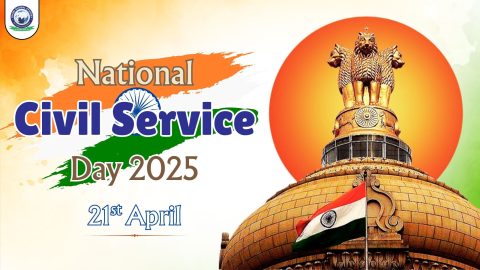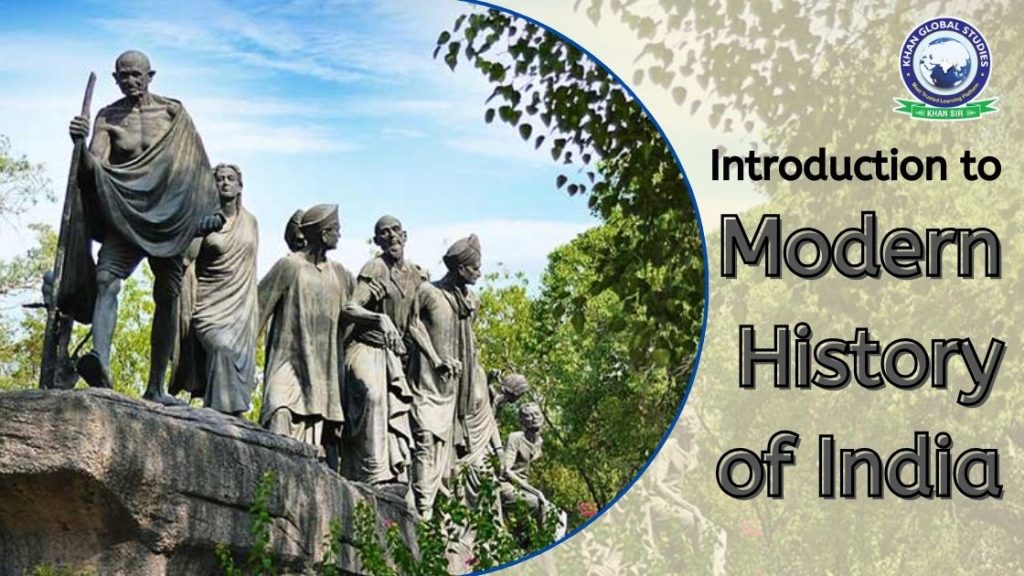The modern history of India starts after 1857 and continues till 1947. This article explains in detail the modern history of India until independence.
People say that the world’s modern history began after the Middle Ages. After the Age of Reason and the Age of Enlightenment, people say that historical events entered the modern period. This is especially true of events following the beginning of the Industrial Revolution. It is said that the modern history of India began after 1850. Some important periods in the modern history of India shaped the events that occurred long after these periods.
Beginning of the Modern History of India
In 1857 there was a large-scale mutiny of Indian soldiers against the British colonialists. There were many reasons behind this rebellion. Some of the broad reasons for the rebellion are as follows:
- The gunpowder cartridges of the Enfield rifles contained ingredients that were incompatible with the religious practices of both Hindus and Muslims.
- Long-standing dissatisfaction with British Taxation Policies.
- Racist attitude of British officers towards Indian soldiers.
- The British adopted the policy of land acquisition.
- The trigger point was the rebellion of Sepoy Mangal Pandey. After Mangal Pandey, soldiers from all over the country started joining the farmer armies formed in many districts in different parts of the country.
Results of the War of 1857
- The entire administration and government of India were transferred from the East India Company to the British Crown.
- The British Crown took over all the land of the East India Company.
- As a result of the transfer of government, the British Raj came to dominate most parts of the country as they had considerable influence in the native princely states.
The British Raj (1858–1947)
After the rebellion of 1857, the British government started colonising India in full swing. They built railroads and irrigation systems. The focus was on preparing workers for the technologically advanced British Empire and about 60,000 Indians were enrolled by the late 1890s.
Many political organizations were formed. The most prominent among these were the Indian National Congress, the All India Muslim League and the All India Hindu Mahasabha. The latter two were openly influenced by religious viewpoints in their politics. The Indian National Congress did not participate in Socio-Religious Movements.
Many currency notes came into circulation during the British Raj. Some of them are as follows:
- Renaissance of India: A period of social reforms, primarily in the Bengali region, that focused on the treatment of women in society, religious conservatism, caste, marriage, and the dowry system. It is said that it started with Raja Ram Mohan Roy and ended with Rabindranath Tagore.
- Famine: India suffered some of the worst famines in history under British Rule. These were generally the result of a combination of natural factors and destructive and insensitive British policies.
- World War I: Nearly one million Indian soldiers served the British Empire during the First World War. Of these, approximately 74,000 people lost their lives.
- World War II: About two and a half million Indians were part of the British war effort in World War II. At this time the Quit India movement started. The Indian National Congress had condemned Nazi Germany but did not support Indian soldiers becoming part of the war unless India gained complete independence from the Crown.
Indian Independence Movement (1885–1947)
The Indian independence movement was one of the most important political movements in the modern history of India. The rise of Indian nationalism was due to many factors. Some historians say this was because British rule was exploitative. Some people say that this was because the British were unfair and racially discriminatory towards Indians. Nevertheless, others argue it was a combination of these and more factors.
The Indian independence movement went through several phases. The first important change brought about by the movement was the formation of an Advisory Council to the Viceroy of India. The second achievement was the appointment of Indians to this council in 1861. These were efforts towards self-rule.
However subsequent events raised the demand for complete independence. The call for Swaraj was made by Bal Gangadhar Tilak. The Swadeshi movement also emerged as a part of the umbrella movement of the Indian freedom movement. It was promoted by Bipin Chandra Pal, Lala Lajpat Rai and Bal Gangadhar Tilak. The partition of Bengal was another inspiration for the movement for complete independence. This was a major reason for the feeling of disenfranchisement among Indians.
- After World War I: After World War I the British government adopted a “carrot and stick” approach. He did this against the growing nationalist movement and as compensation for Indian soldiers in the First World War. After 1920, the non-violent movement led by Mahatma Gandhi used peaceful methods of protest which saw participation of people from all over the country.
- After World War II: The year 1946 witnessed great turmoil in the political environment of the country. There were several mutinies in various armed forces. With these rebellions, the Indian National Congress won 8 out of 11 provinces in the elections. In late 1946, the Labor government in power in Britain decided that it would end British rule in India. He said that he would complete the transfer of power by June 1948.
Independence and Partition
India was divided into the Dominion of India and the Dominion of Pakistan. This is one of the saddest incidents in recent history. Lakhs of people were displaced due to partition and lakhs of people died in the riots that accompanied it. The shock of the events has had a long-term impact on the socio-political systems of both countries.
Major Issues of Modern Indian History
Many problems and issues are seen in modern India. The major issues in the history of modern India include poverty, inequality, caste discrimination, communal tension, etc. Most of these issues still prevail in India.
(1) Colonialism and Drain of Wealth
The impact of British colonialism on India, including the exploitation of resources and suppression of Indian culture and identity, was a major issue in modern Indian history.
(2) Communal Tension and Religious Violence
India has a diverse population composed of many different religious and ethnic groups. Communal tension and religious violence, especially between Hindus and Muslims, have been recurring issues in modern Indian history.
(3) Caste Discrimination
India’s caste system, which traditionally determined a person’s social status and occupation based on birth, has been a major issue in modern Indian history. Discrimination and violence against lower castes, especially Dalits (formerly known as “untouchables”), have been widespread.
(4) Poverty
Despite significant economic development in recent decades, poverty remains a major issue in India. Millions of Indians continue to live in extreme poverty.
(5) Inequality
There is a huge difference between the rich and the poor.
(6) Political Instability and Corruption
With the rise in regional and caste-based politics, India has seen frequent changes in government and political instability. Corruption has also been a major issue, with many politicians and bureaucrats accused of corrupt conduct.
(7) Separatist Movement
India is a diverse country. Many regions have their own unique cultural and linguistic identities. Separatist movements in many states/regions of India have been a major issue in modern Indian history.
(8) Violation of Human Rights
India reports repression of civil liberties and democratic institutions, violence against marginalized communities, and extrajudicial killings.
(9) Political Instability
The 1990s and 2000s witnessed the rise of regional and caste-based politics. This led to coalition politics and political instability. Though not without criticism, the popularity of right-wing politics resulted in a stable majority government in India after 2014.
(10) India-Pakistan Conflict
Relations between India and Pakistan, including the long-running dispute over the region of Kashmir, have been a major issue in modern Indian history. Both the countries have fought many wars and there is tension between them.
(11) India-China Conflict
In 1962, war broke out between India and China over territorial disputes and conflicts, which resulted in China’s victory. There is a border dispute going on in the Himalayan region.
(12) Internal Security Issues
Internal security issues in India include many challenges that affect the stability and security of the country. Some of the major internal security issues in India include insurgency, terrorism, Naxalism, cybercrime etc.
Conclusion
The history of modern India is proof of the making of a nation. This story tells how people came together and achieved a seemingly impossible goal. History is important because it is the record of human endeavor and progress.
FAQs
Q: Who is the father of modern Indian history?
A: Raja Ram Mohan Roy.
Q: Where does modern Indian history begin?
A: Modern Indian history begins in the middle of the 18th century.



